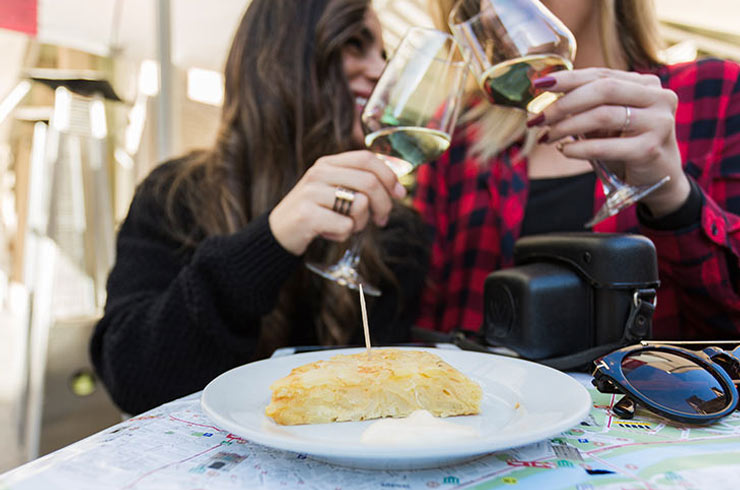Introduction: A way of traveling you can taste
In recent years, a new way of exploring the world has emerged that goes beyond monuments, landscapes, or big cities.
We are talking about gastronomic tourism, a growing trend that invites travelers to discover destinations through their flavors, aromas, products, and culinary traditions.
For many travelers, local cuisine has become the true driving force behind their itineraries, and Zaragoza is positioning itself as one of the most interesting cities in northeastern Spain to enjoy this kind of experience.
But, what is gastronomic tourism exactly? What sets it apart from other ways of traveling? And why does Zaragoza offer such a unique setting to savor the culture of a region?
This article invites you to dive deeply into the meaning and possibilities of this phenomenon, understanding how it has become a tool for cultural connection, local development, and personal enjoyment.
From its local products to its wine and food routes, from tapas in the historic center to visits to wineries and traditional markets, we will guide you through the key aspects to understand culinary tourism in all its splendor.
And we will do so with a special focus on Zaragoza, where cuisine is identity, memory, and shared pleasure.
What is gastronomic tourism?
Definition and origin of the concept
Gastronomic tourism, also known as culinary tourism, is a type of travel in which the visitor’s main interest is to discover and enjoy the culture of a place through its gastronomy.
This form of tourism is not limited to eating in restaurants; it encompasses a wide variety of activities related to local cuisine: visits to markets, traditional cooking workshops, routes highlighting native products, experiences with producers, wine or olive oil tastings, and more.
The concept itself began to be formally studied in the last decades of the 20th century, although traveling for gastronomic pleasure has much older historical roots.
With the rise of globalization and the growing interest in the origin of food, gastronomic tourism has consolidated itself as a distinct tourism category, recognized even by organizations such as the World Tourism Organization (UNWTO), which defines it as a key tool for diversifying the tourism product and promoting sustainable development.
Today, gastronomic journeys not only satisfy the palate but also meet the desire for cultural connection, sustainability, authenticity, and learning that more and more travelers are seeking.
In this context, cities like Zaragoza find a great opportunity to offer experiences that highlight their culinary heritage, identity, and agri-food landscape.
Gastronomic tourism vs. traditional tourism
One of the main differences between gastronomic tourism and traditional tourism is the focus.
While conventional tourism usually centers on monuments, museums, or landscapes, the gastronomic journey seeks experiences that engage the senses—especially taste and smell—in order to truly get to know a territory from the inside.
It is not the same to visit Zaragoza for the Basilica of El Pilar as it is to come and savor its Ternasco de Aragón, attend a showcooking session with local chefs, or explore its wine routes.
This type of tourism also transforms the pace of travel: instead of “seeing a lot in little time,” culinary tourism invites you to slow down, savor, converse, observe how an artisanal cheese is made, or take part in a traditional grape harvest.
It is a slower, more mindful way of traveling, deeply connected to the environment.
In addition, it tends to generate a more positive and direct economic impact on the local community, by supporting small businesses, artisanal producers, and sustainable projects.
This makes gastronomic tourism a key tool for territorial development and the revaluation of food cultures that might otherwise disappear.
Cultural, social, and economic importance
The value of gastronomic tourism is not measured only by the number of visitors or the volume of spending, but also by its ability to strengthen local identity, stimulate both rural and urban economies, and preserve traditional knowledge.
Gastronomy is, at its core, a living cultural expression that conveys values, memory, and history.
When the traveler sits at the table, they are not just eating: they are taking part in a collective narrative.
From an economic perspective, culinary tourism makes it possible to diversify the tourism offer, reduce seasonality, and redistribute wealth to sectors that previously remained on the margins of large tourist flows.
That is why many regions —including Zaragoza and all of Aragón — have begun investing in projects that strengthen their positioning as reference destinations for gastronomy.
On the social level, it creates a bond between visitors and hosts, encouraging exchange and mutual respect.
It also fosters pride in local traditions and helps recover techniques, recipes, and products that had been forgotten.
In the case of Zaragoza, this is reflected in the appreciation of Bajo Aragón olive oil, Cariñena wines, convent-made sweets, and stews handed down through generations.
Types of gastronomic tourism: beyond food
Although it is often associated only with eating, gastronomic tourism is much broader and more versatile.
There are different kinds of experiences depending on the traveler’s profile, their interests, and the local context.
Some of the most common include:
- Visits to markets and local producers: they allow visitors to discover firsthand the origin of food, production methods, and the stories behind each product.
- Wine and olive oil routes: especially relevant in regions like Aragón, where viticulture is an essential part of the landscape.
- Traditional cooking courses and workshops: where visitors learn to prepare authentic recipes such as “migas aragonesas” or “bacalao ajoarriero.”
- Sensory experiences in restaurants with identity: which reinterpret tradition through innovation, like many chefs in Zaragoza who focus on local products.
- Gastronomic festivals and events: such as fairs, seasonal food celebrations, or tapas competitions, offering a collective and festive vision of good eating.
As you can see, the gastronomic journey can take many forms, from the most casual to the most exclusive.
What truly matters is that the experience is authentic, connected to the territory, and meaningful for those who live it. And in this, Zaragoza has a lot to offer.
☕ Gastronomic tourism is also about coffee culture. Explore Zaragoza through its cozy cafés and specialty brews in this guide to the best coffee shops in Zaragoza and enjoy a different side of the city.
Why is Zaragoza an ideal destination for gastronomic tourism?
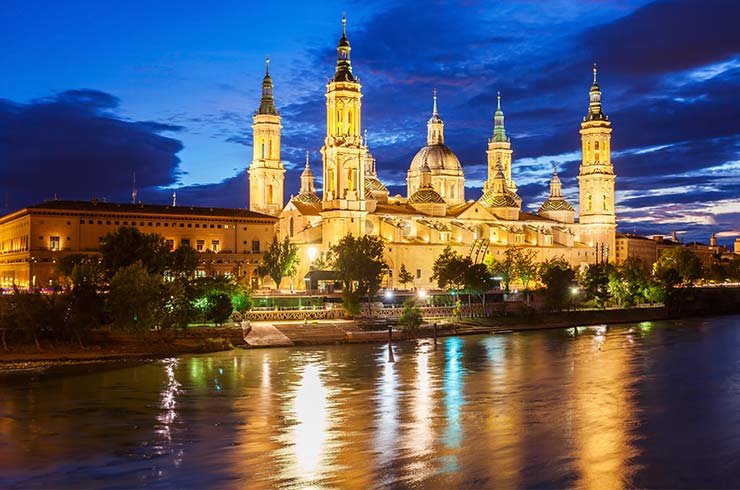
Location, history, and diversity of products
Zaragoza, the capital of Aragón, is strategically located between Madrid, Barcelona, Valencia, and Bilbao.
This privileged position has historically made the city a cultural and commercial crossroads, something that is also reflected in its cuisine.
Its gastronomy blends Mediterranean influences with those from inland Spain and the north, resulting in a diverse, authentic offering deeply rooted in the territory.
The province boasts great agri-food wealth, from the fertile farmlands of the Ebro Valley to the wine regions of Cariñena and Calatayud, as well as mountainous areas with strong livestock traditions.
This diversity allows gastronomic tourism in Zaragoza to be firmly grounded in zero-kilometer products, with designations of origin and quality seals that guarantee authenticity and flavor.
Zaragoza’s gastronomic identity: tradition and innovation
What makes the gastronomic journey in Zaragoza so special is its balance between the traditional and the contemporary.
Here, centuries-old recipes coexist with signature cuisine proposals that reinterpret the Aragonese culinary repertoire with an innovative approach.
Restaurants such as La Prensa, Cancook, or Gente Rara have brought local gastronomy to haute cuisine without losing the essence of the product.
Dishes such as Ternasco de Aragón, migas, bacalao ajoarriero, borage, or chilindrón are part of Zaragoza’s culinary DNA. But so are creative tapas, seasonal tasting menus, and neighborhood bars where the same recipes that grandmothers used to prepare are still served.
This combination of tradition and innovation enriches the culinary tourism experience, offering visitors a complete view of cuisine as living culture.
🍽️ Wondering where to enjoy authentic Aragonese cuisine? Don’t miss this complete guide on where to eat in Zaragoza and discover restaurants that combine tradition, innovation, and local flavor.
Markets, bars, and restaurants that tell stories
One of the greatest attractions of gastronomic tourism in Zaragoza is the chance to immerse yourself in authentic spaces where food becomes a narrative.
The Central Market, a modernist jewel recently restored, not only offers top-quality fresh products but also the opportunity to meet the very producers and vendors who are part of the city’s identity.
Beyond the markets, the tapas bars of El Tubo and other areas of the historic center allow visitors to explore cuisine in small bites, with each tapa telling its own story.
From classic ham croquettes to seasonal creations, Zaragoza’s gastronomy is best enjoyed on foot, in a casual and welcoming atmosphere.
And for those seeking a slower-paced experience, traditional and signature restaurants offer menus that reveal the soul of the territory bite by bite.
Star products: from Ternasco to Cariñena DO wine
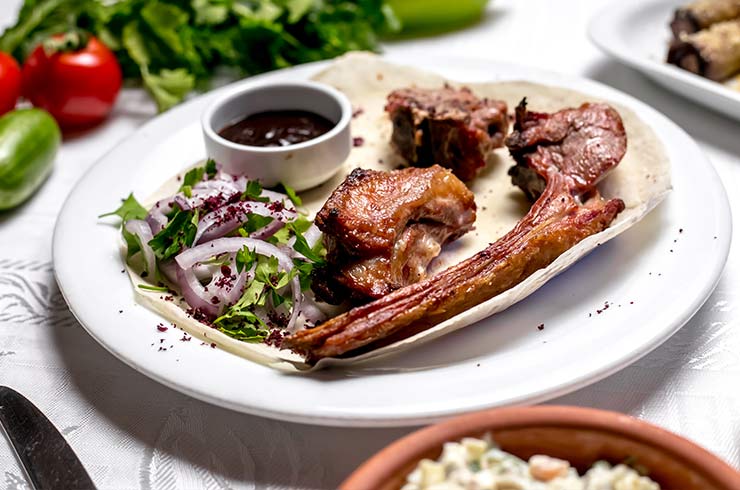
All quality gastronomic tourism is based on products with identity, and Zaragoza has several that define it.
The most emblematic is undoubtedly Ternasco de Aragón, a lamb meat with a European-recognized quality label, which is part of both everyday and festive cuisine.
But it is not the only one. Borage, a humble yet delicious vegetable, has made a strong comeback in recent years and is now a symbol of Zaragoza’s vegetable gardens.
Bajo Aragón extra virgin olive oil and Cariñena Denomination of Origin wines complete a triad of products with deep roots, flavor, and international projection.
These ingredients, in addition to being enjoyed in restaurants, are also the stars of visits to oil mills, wineries, and farms, where travelers can learn about the entire production process and actively participate in the experience.
Zaragoza is also a land of sweets: from anis-flavored “adoquines” to candied fruits of Aragón, including the “Trenza de Almudévar” pastry or convent-made desserts.
All of this adds richness to the story of gastronomic tourism, turning every step into a sensory discovery.
Routes and gastronomic experiences in Zaragoza

Wine routes in Aragón: Cariñena, Calatayud, and more
Gastronomic tourism in Zaragoza finds one of its strongest pillars in the wine routes, which allow visitors to discover not only the taste of the territory but also its history, geography, and character.
The province is home to some of Aragón’s most emblematic wine regions, many of them less than an hour from the capital, making them perfect getaways for travelers looking to connect with authenticity.
The Cariñena Denomination of Origin, one of the oldest in Spain, stands out for its intense wines and vineyard landscapes dotted with charming villages.
Visiting a winery in Cariñena is not just a tasting; it is a journey to the heart of a tradition that has managed to renew itself without losing its essence.
The same is true for the Calatayud and Campo de Borja DOs, which offer wines with their own character, often made from native varieties such as garnacha.
These wine routes usually include walks through vineyards, technical explanations adapted to visitors, guided tastings, and pairings with local products.
Some wineries even combine wine with art, architecture, or nature, creating unique sensory experiences.
Without a doubt, a clear example of how the gastronomic journey can enrich the understanding of a territory.
Gastronomic tours through the historic center and El Tubo
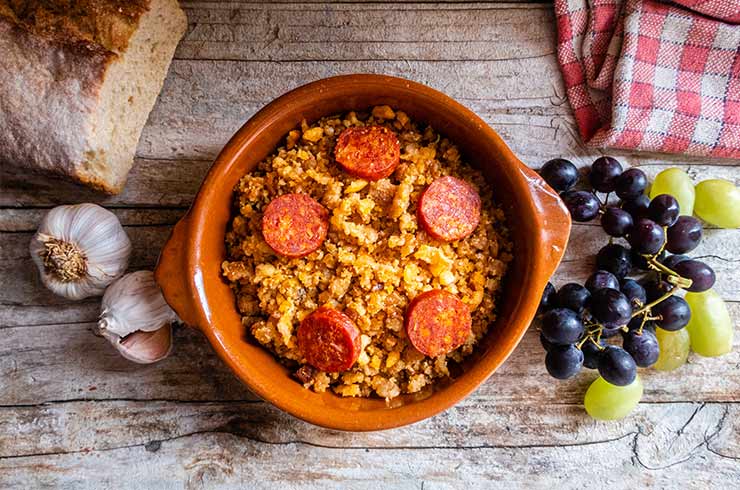
For those who prefer to enjoy gastronomic tourism within the city, Zaragoza offers countless routes where history and flavor go hand in hand.
One of the most popular is the tour of the historic center and the El Tubo area, the city’s most emblematic tapas district.
This maze of narrow streets brings together century-old taverns, innovative bars, and eateries where each tapa is a mix of creativity and tradition.
During these tours, visitors discover the history of the place while tasting dishes that range from the most traditional—such as ham with borage or migas aragonesas—to surprising fusions made with local ingredients.
Guided by experts, these walks help travelers understand the role of gastronomy in Zaragoza’s daily life and how each recipe tells part of the city’s soul.
Beyond El Tubo, other neighborhoods such as La Magdalena, the surroundings of the Central Market, or the banks of the Ebro also offer less touristy but equally delicious gastronomic routes.
Taking part in these tours is a way to immerse yourself in the local rhythm, support small businesses, and enjoy the best of tapas, wine, and conversation.
🍤 One of Zaragoza’s most iconic foodie districts is El Tubo, a labyrinth of narrow streets filled with tapas bars and lively atmosphere. Get inspired by this article about El Tubo in Zaragoza and live a true gastronomic adventure.
Immersive experiences: showcookings, workshops, tastings
One of the most enriching aspects of culinary tourism is the possibility of actively engaging with gastronomic culture.
In Zaragoza, this translates into a growing range of immersive experiences that allow travelers to move from spectators to protagonists.
Showcookings with local chefs, for example, are an excellent way to learn traditional and contemporary techniques, understand the use of native products, and participate in a dynamic, educational environment.
Workshops on Aragonese cuisine, traditional pastries, or creative tapas allow visitors not only to cook but also to understand the origin and symbolism of each recipe.
Tastings are another star format: wine, olive oil, cheese, chocolate. In all of them, the work of local producers is highlighted, creating a space for direct connection between visitors and the territory.
Many of these activities take place in privileged settings —wineries, farms, cultural centers— and with passionate professionals who transmit much more than technical knowledge.
These gastronomic experiences are ideal for couples, groups, or families, offering a different way of traveling: slower, more meaningful, and more memorable.
Sustainable and local gastronomic tourism
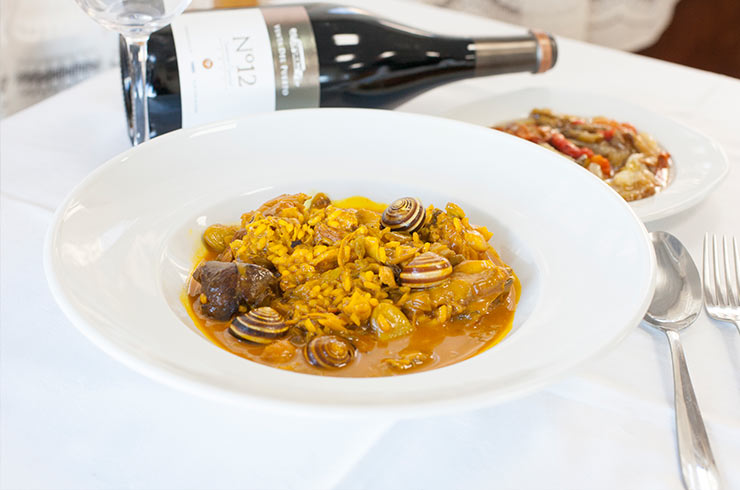
The future of gastronomic tourism undoubtedly lies in sustainability.
In Zaragoza and its surroundings, more and more projects are committed to a tourism model that respects the environment, promotes responsible consumption, and supports the local economy.
This is reflected in the focus on seasonal products, support for small producers, the use of reusable packaging, and waste reduction.
By choosing a conscious gastronomic journey, visitors become agents of positive change. Participating in a visit to an organic farm, attending a local farmers’ market, or dining in a restaurant that works with locally sourced food not only enhances the personal experience but also contributes to the development of resilient communities.
In this sense, initiatives such as agroecological markets, urban gardens, or food education programs are also part of the sustainable culinary tourism ecosystem.
With its growing commitment to the environment and food quality, Zaragoza positions itself as an ideal destination for those who wish to travel responsibly.
Benefits of gastronomic tourism for travelers and the local community
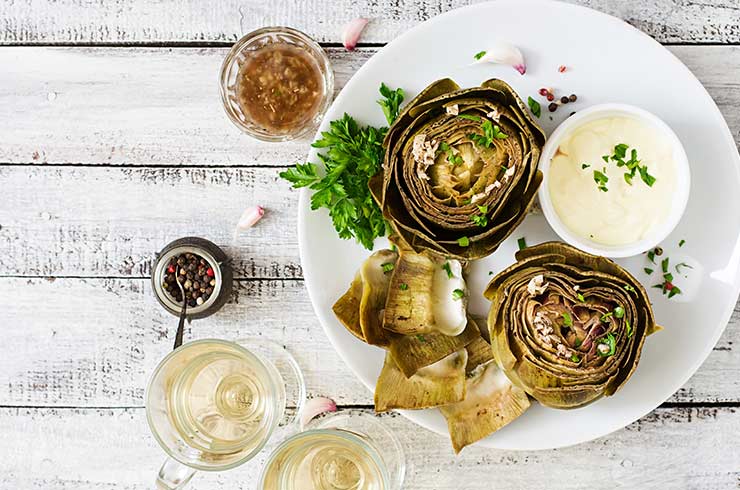
Connection with local culture through the palate
One of the greatest contributions of gastronomic tourism is its ability to create a real, deep, and emotional connection between visitors and the destination.
Through flavors, travelers access stories that cannot be found in museums or guidebooks.
Each recipe, each ingredient, and each culinary technique is a direct expression of a community’s history, climate, geography, and identity.
In Zaragoza, this connection is experienced in the preparation of migas, in a conversation with a winemaker about the harvest, or in the simplicity of boiled borage dressed with Bajo Aragón olive oil.
The gastronomic journey awakens the senses, but also memory and empathy: it allows travelers to savor what others have eaten for generations, to understand their way of life, their festive calendar, and their values.
In a world where many destinations tend toward homogenization, culinary tourism offers visitors the chance to live an unrepeatable experience, rooted in authenticity—something that cannot be replicated.
This elevates eating into a first-rate cultural act.
Revitalization of local commerce and producers
From an economic perspective, gastronomic tourism acts as a driving force that energizes the nearest commercial fabric.
By focusing on local products and origin-based experiences, it generates direct income for farmers, ranchers, fishermen, artisans, food processors, and hospitality businesses that are part of the territory’s food system.
In Zaragoza, this means supporting lamb producers, Cariñena winemakers, Bajo Aragón olive oil cooperatives, or bakeries that keep centuries-old recipes alive.
It also implies giving visibility to family-run restaurants, neighborhood bars, and traditional markets that are often overlooked by conventional tourism.
The gastronomic journey encourages consumption within small economies, promotes circularity, and helps maintain stable, high-quality jobs.
It also drives new forms of local entrepreneurship, such as producer-led tours, cooking schools, agro-experiences, or rural tourism projects focused on food.
Positive impact on sustainability and the territory
Well-managed gastronomic tourism also has a positive impact in environmental and territorial terms.
By promoting the use of local, seasonal, and organic products, it helps reduce the carbon footprint and highlights agricultural practices that respect the environment.
It also emphasizes the importance of preserving agricultural landscapes, native breeds, and traditional techniques.
In the case of Zaragoza, this sustainability is reflected in initiatives such as the promotion of short distribution chains, support for agroecology, or the integration of sustainable practices in restaurants, wineries, and accommodations.
In addition, by diversifying visitor profiles and reducing seasonality, culinary tourism helps decongest saturated areas and distribute the benefits of tourism more evenly across time and space.
At the same time, this model contributes to preserving food culture as intangible heritage.
And at a time when many traditions are at risk of being lost, this revaluation through tourism is an effective and emotional way to ensure their continuity.
Tips for experiencing gastronomic tourism in Zaragoza like a local
What to look for in an authentic gastronomic experience
For gastronomic tourism to have real value, it must offer authenticity.
This does not simply mean that the food is “typical,” but that it is connected to the culture, the products, and the people who make it possible.
An authentic gastronomic experience is one that allows you to understand the “why” and the “how” of a dish, connects you with the people who prepare it, and is based on local, fresh, seasonal ingredients.
In Zaragoza, this can take many forms: a set lunch menu in a family-run restaurant serving traditional stews, a wine tasting led by the winemaker themselves, a visit to an olive mill where oil is still pressed as in the past, or a cooking class where you learn to prepare dishes you won’t find in guidebooks.
Look for places that tell a story, that work with nearby producers, and that are committed to their environment.
Key dates and must-see events in Zaragoza
Planning your gastronomic journey around special dates can greatly enrich your experience.
Zaragoza hosts events throughout the year that celebrate local cuisine in all its dimensions, from the most popular to the most gourmet.
– **Fiestas del Pilar (October)**: ideal for combining culture, tradition, and gastronomy. During these days, fairs, markets, and gastronomic competitions take place.
– **Gastropasión (Holy Week)**: a tapas route inspired by Lent cuisine, reinterpreted by the city’s best bars and restaurants.
– **Zaragoza Food Fest**: thematic cycles dedicated to hamburgers, ramen, tacos, sandwiches… a fusion between tradition and innovation.
– **Agroecological Market of Zaragoza (every Saturday)**: a market of local organic producers held at Plaza del Pilar, perfect for discovering Zaragoza’s pantry firsthand.
These events not only offer the chance to try new flavors but also to take part in cultural activities, showcookings, guided tours, and talks, turning your stay into a complete experience.
How to choose quality gastronomic tours
When booking a route or experience of Gastronomic Tourism, it is important to consider certain aspects that make the difference between a superficial activity and a truly enriching one:
– **Specialized guides**: choose companies that work with local guides who are passionate about gastronomy and have in-depth knowledge of the territory.
– **Connection with local products**: make sure the tour includes places that work with nearby ingredients and respect seasonal produce.
– **Variety of stops**: a good tour combines bars, markets, gourmet shops, and producers to provide a complete overview.
– **Small group sizes**: this allows for a more intimate, personalized, and closer experience.
– **Commitment to sustainability**: look at whether recyclable materials are used, food waste is avoided, or social projects are supported.
In Zaragoza, companies like Rutica 41 offer carefully designed routes, with expert guides and a clear commitment to local gastronomic heritage, sustainability, and quality.
Practical recommendations and local tips
Finally, here are some useful tips to help you enjoy your gastronomic journey in Zaragoza like a true local:
– **Eat where the locals eat**: don’t limit yourself to tourist spots. Ask local people or look for reviews of places frequented by Zaragoza residents.
– **Go tapas hopping without rushing**: Zaragoza is best enjoyed walking and tapas-hopping. Take your time to try several tapas in different bars, especially in El Tubo, La Magdalena, or around the Central Market.
– **Try seasonal products**: each season offers unique ingredients—artichokes in winter, cherries in spring, Calanda peaches in summer, or mushrooms in autumn.
– **Shop in traditional markets and stores**: if you take products home, make sure they are quality items with a story. Preserves, wines, oils, or sweets are tasty souvenirs with identity.
– **Be curious**: ask, observe, participate. Zaragoza’s gastronomy is full of nuances, and discovering them will make you feel part of the place.
🍷 If you want to experience Zaragoza’s vibrant food culture, nothing beats enjoying tapas outdoors. Check out this guide to the best tapas bars with terraces in Zaragoza and discover the city’s flavors in the open air.
Conclusion: Zaragoza as the gateway to the flavors of Aragón
Throughout this journey, we have seen that gastronomic tourism is not just a trend, but a profound and meaningful way of getting to know a place.
Traveling through flavors, local products, inherited recipes, and shared culinary experiences allows visitors to integrate into the culture in an authentic, respectful, and enriching way.
In this context, Zaragoza stands out as a privileged destination: a city where tradition and gastronomic innovation go hand in hand, where local products have soul, and where every food experience tells a true story.
From tapas in El Tubo to Cariñena wines, from showcookings in the historic center to rural routes through orchards and wineries, Zaragoza offers travelers the chance to savor Aragón in all its depth.
Call to action: discover our gastronomic routes
If you are looking for a different way to discover Zaragoza —closer, more sensory, more authentic— we invite you to live a gastronomic tourism experience with us.
At Rutica 41, we design routes and guided visits where food is the perfect excuse to uncover the soul of the territory.
Our gastronomic tours combine history, culture, flavors, and real people.
Whether in the historic center, in a centuries-old winery, or in a small cooking workshop, every stop is designed to leave you with an unforgettable memory.
Don’t travel in a hurry. Travel with a hunger to discover.
And Zaragoza will feed you like no other.

